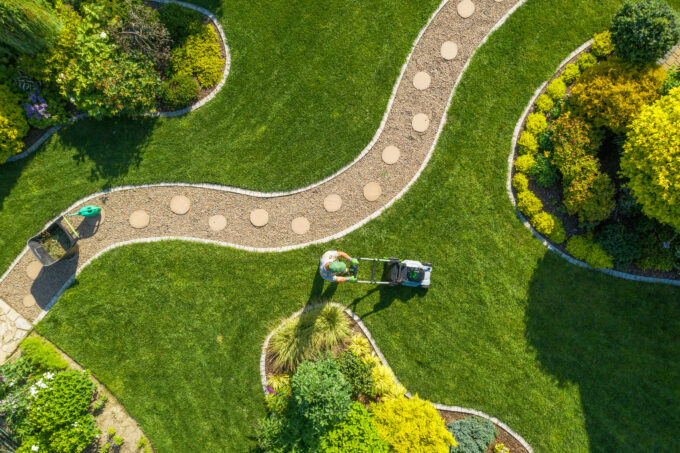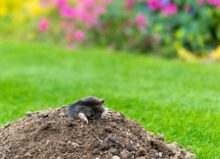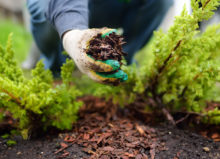5 Essential Summer Landscaping & Lawn Care Tips

For many people, summertime is synonymous with vacation, warmth, and fun, but for homeowners and gardeners, it means hot, hot heat with no rain. When your yard isn’t maintained in the summer, grass will yellow and die, flowers will wilt, and, most frustratingly, vegetables and other crops dry out.
Beat the heat (and lack of rain) this summer and ensure a happier and healthier yard by following these five essential tips.
1. Master Your Watering Techniques
Lawns & Irrigation Systems
On average, lawns need around one inch of water per week, which either rain or artificial watering systems could supply. Instead of going out every day with a hose, you could save time by installing an irrigation system. However, the precise irrigation frequency is influenced by variables such as the water pressure, the type of soil in your yard, the amount of sunlight, and your climate.
To ensure your lawn receives the appropriate volume of water, you can gauge your sprinkler system’s delivery rate. This can be done by placing a straight-sided container, like a tuna can, on your lawn, activating your sprinklers for a quarter of an hour, and subsequently measuring the water depth in the can. This measurement can then be quadrupled to estimate the amount of water your sprinkler system can distribute in an hour.
Irrigating your lawn is best done early in the day to lessen the loss of water due to evaporation and to prevent the onset of diseases. If you’ve recently installed new sod or grass seeds, they will require watering more frequently—multiple times daily for new sod and three to four light waterings per day for freshly sown grass seeds.
Gardens & Ollas
If you have vegetable gardens but can’t install a drip irrigation system, consider buying or making ollas. Ollas are an ancient irrigation method that involves taking clay pots with drainage holes and placing them in the ground.
To make your own, you’ll need large terracotta pots (make sure they have drainage holes), a cork or something to plug the drainage hole, and a cloth or a saucer to place over the pot. Simply plug the cork into the pot’s drainage hole (which helps prevent water from seeping out too quickly) and place the cloth or saucer on top of the pot to prevent pests from contaminating the water.
Once you’ve made your ollas, bury them in your garden—you’ll need to dig a deep hole because the pot must be almost fully covered. The opening of the pot shouldn’t be buried as you’ll need to refill it with water, and you must bury your ollas at least four feet apart to ensure proper area coverage.
2. Regular Mowing & Trimming
Regular mowing is another fundamental aspect of summer lawn care. A well-maintained lawn enhances the aesthetic appeal of your property and contributes to the overall health of your grass. When grass is left overgrown, it can also influence pest infestation (ticks, fleas, spider mites, etc.).
When mowing, set your mower blade to the highest setting and only cut your grass once it grows to at least three inches. Cutting grass too short can stress it, making it more susceptible to pests and disease.
Additionally, leave the clippings on the lawn after mowing. They decompose quickly and provide beneficial nutrients to your soil.
3. Fertilize
You probably already know that fertilizing your grass in the spring is important, but it’s just as important to fertilize it in the summer too. You generally only need to fertilize your grass once in the summer, but doing so will ensure it gets the nutrients it needs to continue thriving during the active growing season.
Consider using a slow-release fertilizer, like milorganite, which provides a steady nutrient supply over a longer period.
4. Quickly Address Pests & Weeds
Lastly, you must address any signs of pests or disease immediately, as these issues can quickly escalate during the summer.
Certain bugs, like Japanese beetles and June bugs, can harm your grass, causing wilting and bare patches. If you notice such pests, use a preventative grub control/pesticide, like pyrethrin or chlorantraniliprole, according to the directions on the package. This step will help preserve the health and beauty of your lawn throughout the summer. Please note that if you spray pesticide on a commercial property, you are required to hire a certified pest control company and avoid using restricted pesticides.
5. Add Mulch
If you forgot to add mulch this spring, it’s not too late! Adding mulch to your gardens in the summer will help protect your plants from drought and prevent weed growth.
The Advantage of Hiring a Professional
Knowing how to take care of your lawn is easy—the real issue is finding the time to do it! If work or your personal life isn’t leaving much time for landscaping work, hire a professional to do it for you. At Design One, we can help you maintain a lush and beautiful lawn from spring to winter. We specialize in commercial and residential landscaping services, including retaining wall installations and outdoor water features.
Visit our blog for more landscaping and lawn care tips and tricks, or contact us today to learn more about our services and how we can help you.


